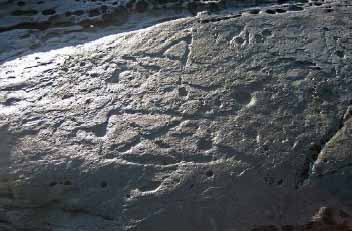
From an article by Peter Anick: “In 1768, Ezra Stiles made detailed drawings of anthropomorphic petroglyphs he found on two graywacke boulders located at the water’s edge in Tiverton, Rhode Island, on the east side of Narragansett Bay (Delabarre 1928). . . Both of these boulders were documented again by Rhode Island antiquarians. Thomas H. Webb and John R. Bartlett in 1835.” Having learned about them, Tiverton resident Bob Paradis decided to see if he could find them. Click here for a six-minute video of what he found created on October 24, 2025.
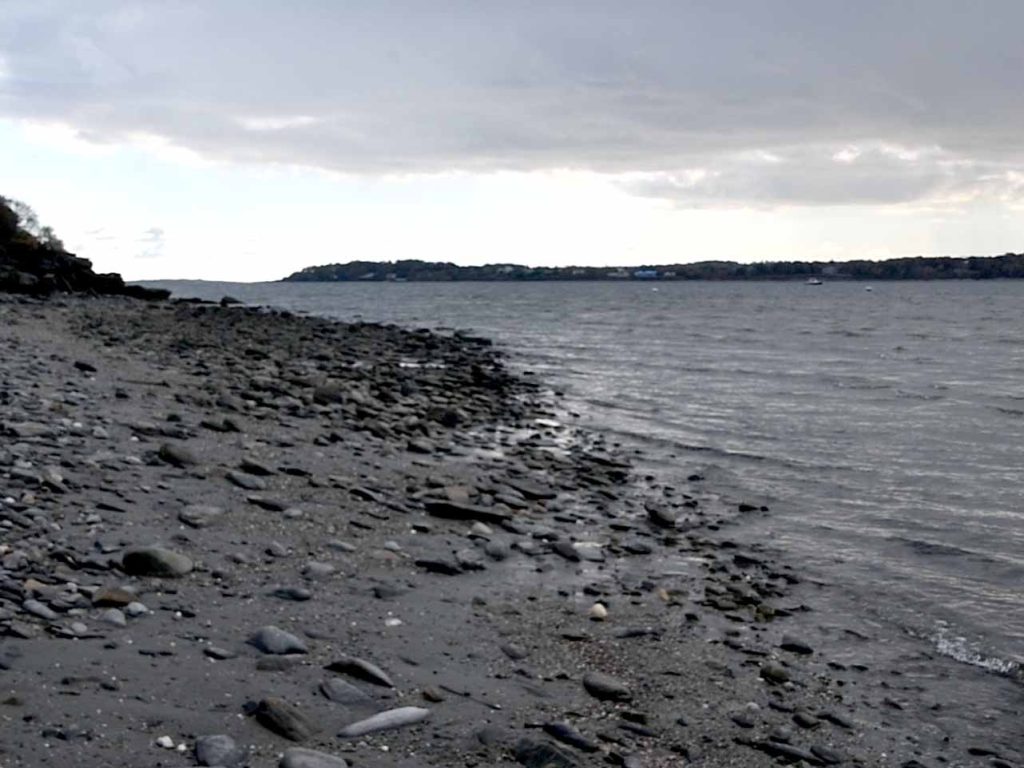
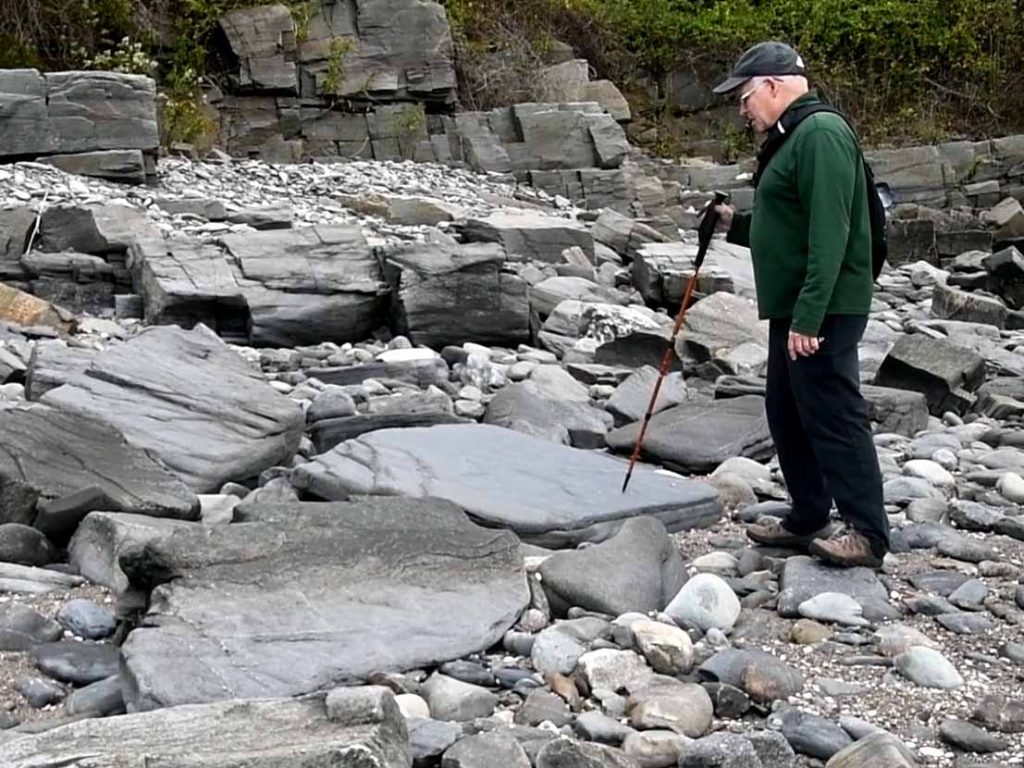
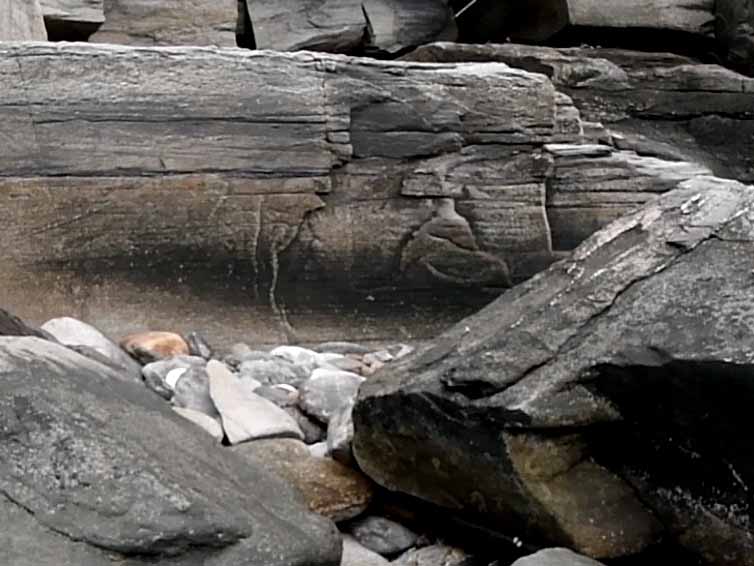
(Above) Along a beach in Tiverton, RI, Bob examined a number of rocks, some of them a fine grained sandstone known as “graywacke” that litter the beach. Some appeared to have inscriptions but turned out to be natural fractures in the rock and not created by man.
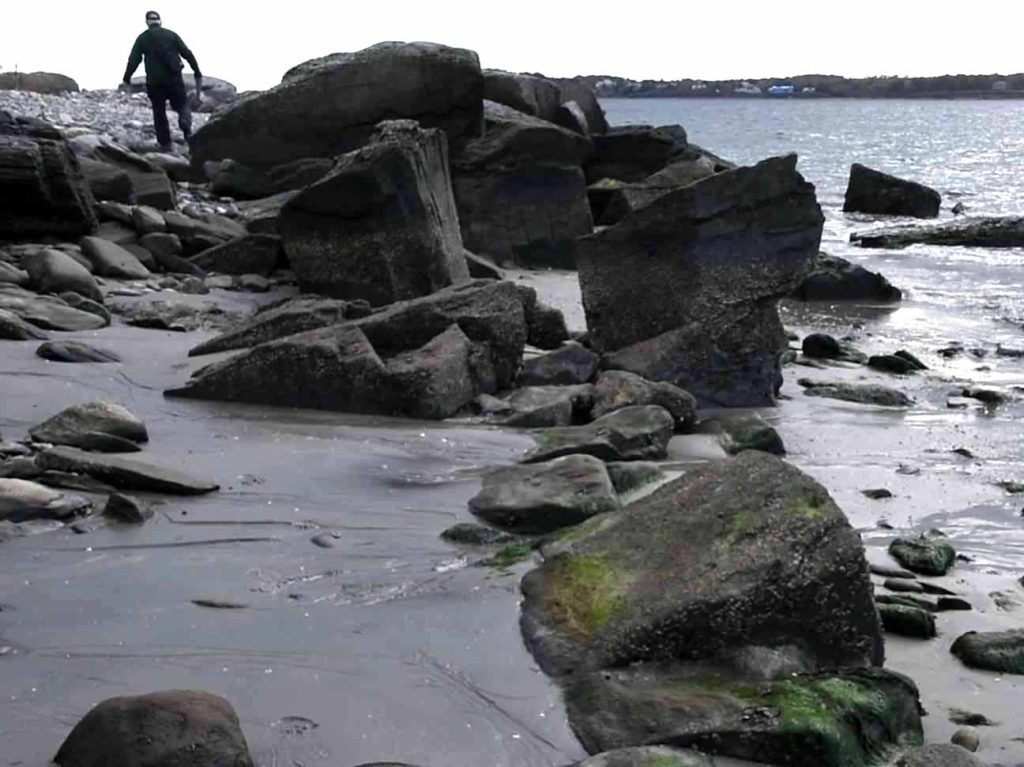
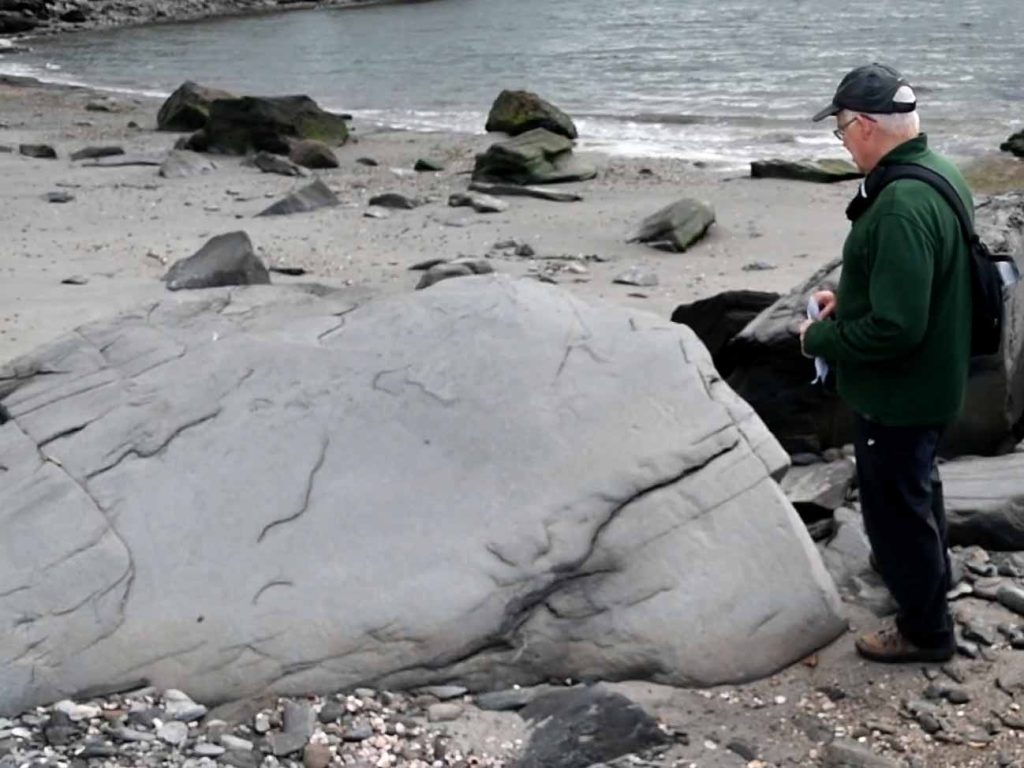
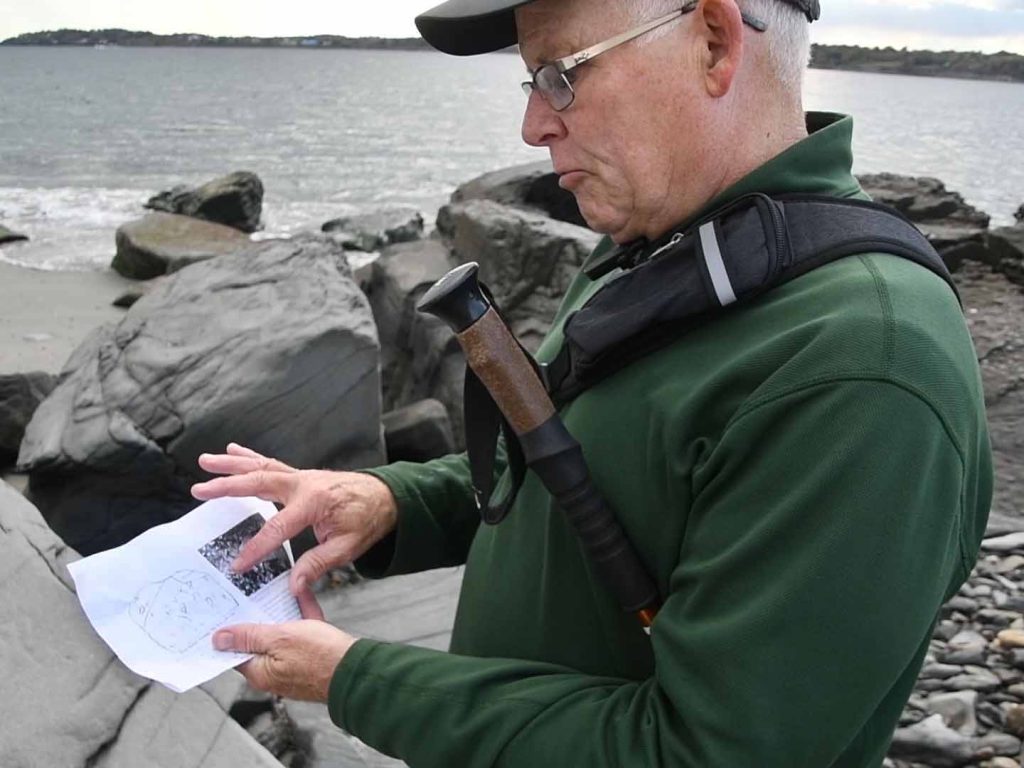
(Above) Eventually, Paradis found them. “New England’s forested landscape, with its tough bedrock and rough glacial moraine, provides a poor canvas for the production of rock art. Nevertheless, small isolated petroglyph sites throughout the region confirm that rock art was produced in the northeast. . . As early as 1680, Massachusetts scholars were debating the meaning of images found on a boulder in Taunton.”

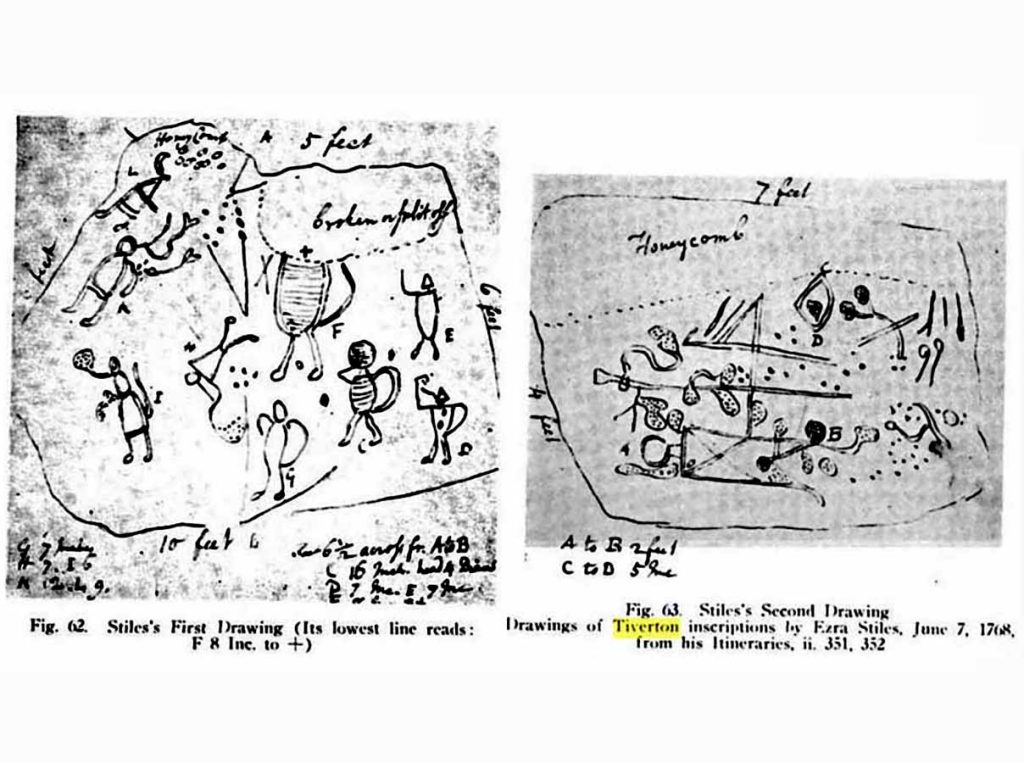
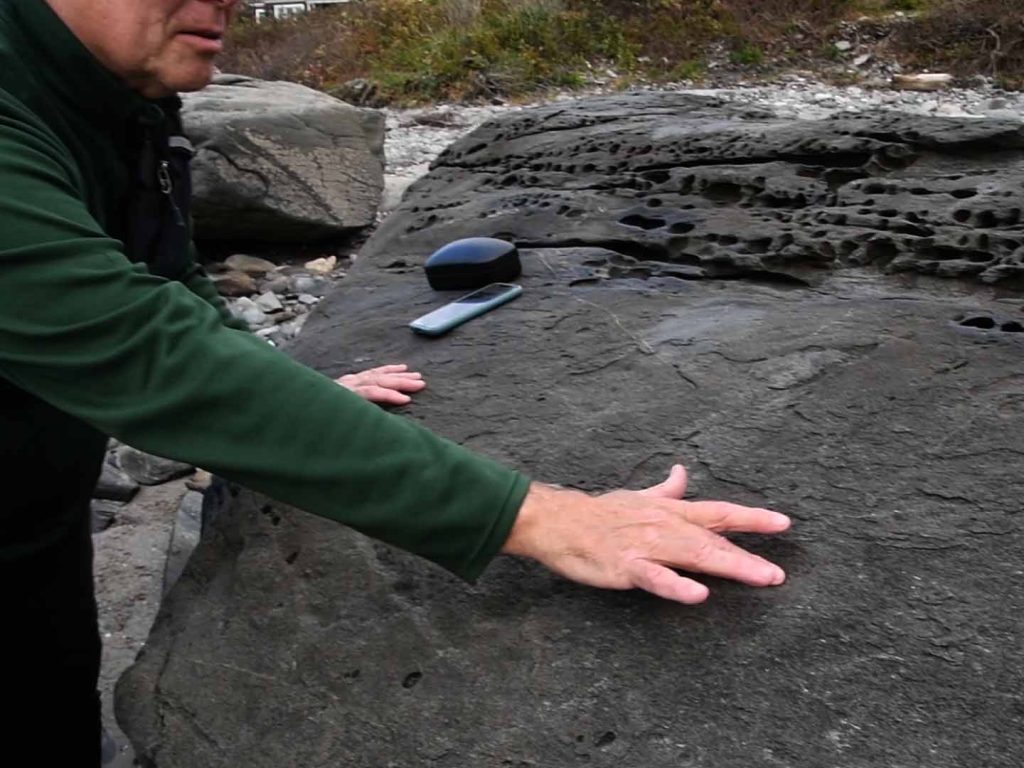
The images on the first stone (Stiles 1, above, left) are smaller, more elegantly executed, and worn smooth, likely due to years of abrasion by salt water and gravel. The second of the two stones recorded by Stiles was in the same cluster of boulders, located slightly further into the Bay. Referring to these boulders as “Stiles 1” and “Stiles 2.” Stiles’s 1768 drawings are reproduced above, center (click to enlarge). The surface of the Stiles 2 boulder (above, right) is much rougher and partially honeycombed.
